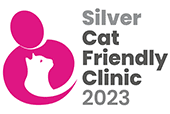Cancer is correctly termed a malignant neoplasm. A neoplasm is an abnormal proliferation of cells. A malignant neoplasm is a group of cells that undergo uncontrolled growth, invade and destroy the surrounding tissues and metastasize (spread to distant sites in the body). In all animals, new cells are constantly being made to replace old and injured cells. This keeps the body fit and healthy. This process of cell replacement and repair is highly regulated and controlled by the body. The name given to the highly regulated sequence of events that a cell goes through when it grows and divides in two is the cell cycle. The regulation of the cell cycle ensures that only perfect copies of the original cell is produced. Cancer starts when a healthy cell is damaged and starts to grow out of control. Perfect replicas of the original cell are not produced and the normal regulation of the cell cycle is lost. The abnormal cells start to grow in an uncontrolled way. What causes this process to go wrong is complex and not fully understood. Some possible causes of cancer are:
- Breed. We know some breeds are more prone to developing cancer than others eg boxers and flat coat retrievers. These breeds are likely to have more genes in them that may cause cancer
- Age. Generally older dogs are more prone to cancer. This is because damage to cells accumulates over time increasing the chances of a faulty cell replication occurring resulting in cancer
- Environmental effects. Carcinogens are chemicals that can cause problems in cell replication leading to cancer. Smoking is the most obvious one of these and exposure to passive smoking is a potential problem in pets. There are also likely to be many other environmental chemicals that could increase cancer risks
- Obesity increases cancer risks
The clinical signs of cancer can vary tremendously depending on the organ of the body that is first affected (the primary site), invasion of surrounding tissues and whether the cancer has metastasized (most commonly to lungs or liver). The treatment of cancer in dogs and cats has progressed dramatically over the last few years. Surgery still forms the cornerstone of treating many cancers and can be supported by follow up chemotherapy and radiotherapy. Other forms of cancer, such as blood and bone marrow cancers, are entirely treated with chemotherapy. Early detection and diagnosis followed by the appropriate treatment gives the best chance of treating cancer in dogs and cats. It is heart breaking to inform an owner that their pet is suffering from cancer. The owner is faced with so many difficult decisions:
- The possibility of radical surgery to treat the cancer
- The possible need for follow up chemotherapy/radiation therapy and side effects associated with this
- The possibility that despite all this, their pet may still die
- How much do they put their pet though, especially as affected patients are often elderly
- The costs of treatment
- The risks of treatment
The treatment plan that is ultimately undertaken will depend upon the veterinary surgeons in charge of the case and the owner’s decisions and beliefs. We hope that this support group can help you through the process.





